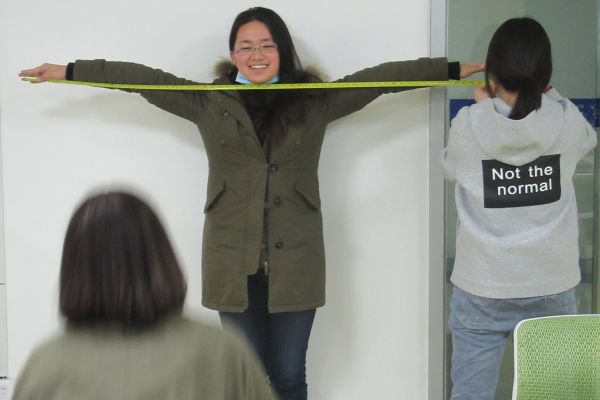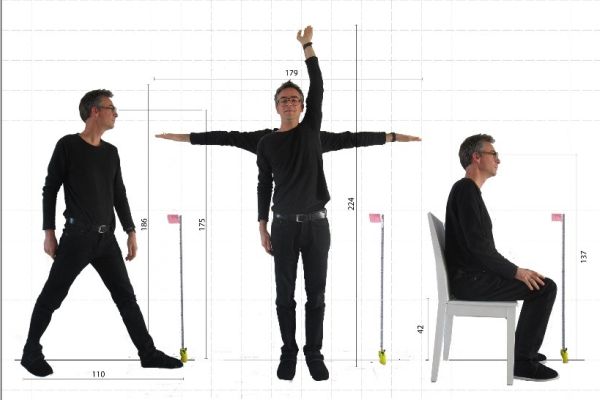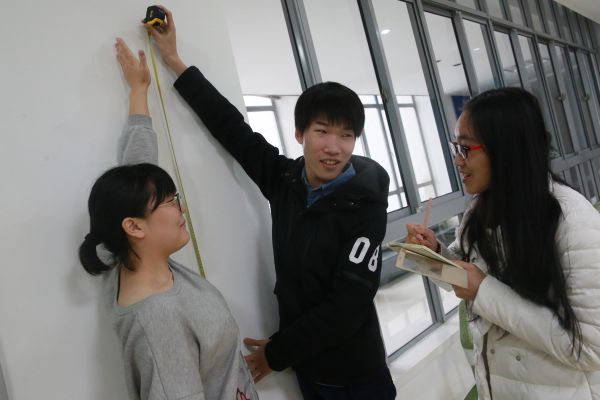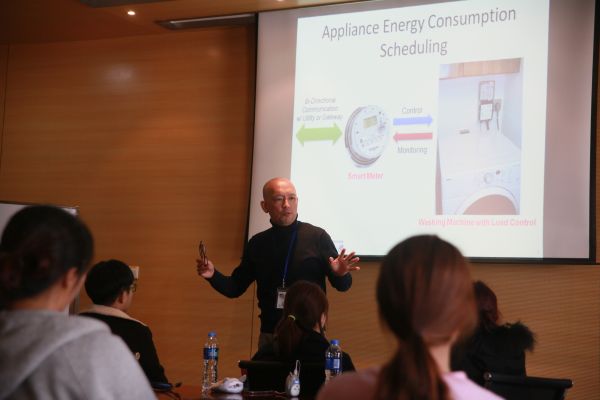25 Feb 2016
Year One Urban Planning and Design students at Xi’an Jiaotong-Liverpool University have been taking the measure of themselves for the first week of their module, ‘Skills in Planning’.
Students worked in small groups to measure their arms, legs, hands and even fingers to form the basis of a design scale which they will use for later practical work.

The activity, devised by lecturers Dr Christian Nolf and Florence Vannoorbeeck, is based on principles of anthropometry dating back to the ancient Egyptians and Greeks and later developed by Leonardo Da Vinci with his ‘Vitruvian Man’.
“The latest important example [of anthropometry] is the ‘Modulor’ by Le Corbusier (1948), who also took a reference body to define a whole system of proportion applying the design of furniture, architecture and city planning”, explained Dr Nolf (who is pictured below, emulating the Modulor).
“The notion of human scale is essential in urban planning and design. I think the best way to make students really ‘get’ that is to have them do it in practice.”

After taking their bodily measurements, students will use them to make diagrams. Later they will measure their dormitory rooms and some part of the campus, as visiting lecturer Florence Vannoorbeeck explained: “Their bodies are used as a reference to be able to measure and compare things in their environment, and after, to make designs based on the human scale. It’s important for designers to know and be aware of the dimensions of the human body.”
Student Ju Ran found the task more difficult than expected, but also more stimulating: “When you put your hands up it’s difficult to see the measurement clearly. Next we will share the photos we took with our camera phones. Then we draw the measurements onto a template of our bodies, hands, etc. This course is compulsory for Urban Planning and Design students, but I really think it’s interesting!”

She also offered her thoughts on how the Urban Planning and Design programme at XJTLU measures up: “We did internships at an urban planning company during the holiday. The workers there all graduated from other schools where they learned foundational skills like drawing, computer aided design or Photoshop early on in their studies, but we’re focused on other things right now, such as English. We also have more things that we should learn by ourselves, teachers don’t spoon-feed you so much like in normal universities in China.”
International exchange with students from South Korea
Elsewhere on campus, 15 undergraduate students from South Korea’s Gachon University participated in a Smart Grid School programme, organised by the Centre for Smart Grid and Information Convergence (CeSGIC), a research centre within the Department of Electrical and Electronic Engineering at XJTLU.
The programme runs from 22 to 26 of February and consists of a series of lectures, tours of the XJTLU campus and Department of Electrical and Electronic Engineering, industry field trips and Chinese cultural exploration tours.

Professor Eng Gee Lim, Head of the Department of Electrical and Electronic Engineering, sees the programme as a significant development for international exchange at XJTLU: “Universities in nearby countries such as South Korea, Japan, and other non-Chinese speaking countries like to have exchange programmes with foreign universities that can provide them with specialised subject area knowledge in English. XJTLU has an advantage in terms of proximity, whilst still offering high-quality teaching at a relatively low cost.”
25 Feb 2016




